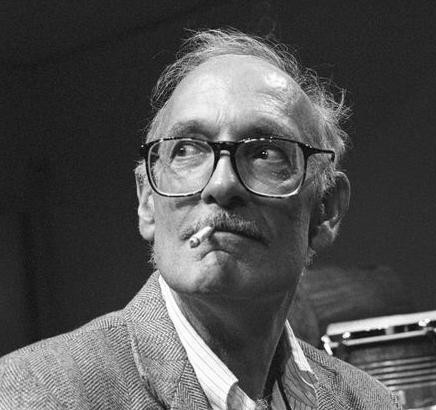New World members offer a feast of rarities in chamber finale
The four young musicians entered in a darkened stage. As the lights came up, the audience at New World Center saw a string quartet equipped with a few accessories not called for in the 18th-century—gongs, rows of goblets and a cluster of electronic speakers.
They launched into the shrieking, shattered-glass sound of George Crumb’s Black Angels, a pathbreaking 1970 work inspired by the composer’s opposition to the Vietnam War, in what would be a committed performance that did justice to the twisted, nightmare style of the music.
Before the concert Sunday in Miami Beach, Michael Linville, the New World Symphony’s dean of chamber music, came on stage and offered congratulations to the audience for “your courage in coming to a concert by composers that probably many of you had never heard of before.”
Crumb’s work is not one for performers who would prefer to remain within the quartet world envisioned by Haydn. The four women on stage gave a fearless performance of a work that required them to draw their bows against glass goblets, produce electronically amplified sounds with their voices and draw something other than conventionally beautiful sounds from their instruments.
The work is full of delicate East Asia-flavored tones, put in opposition to Western music. When violinist Maya Cohon played a passage in delicate, glassy harmonics, the other violinist, Rebecca Reale, blasted it away with an assault of chords and runs. Among the most effective moments was the arrival of a quotation from Schubert’s “Death and the Maiden” quartet—the musicians bowed on their fingerboards near the scrolls of their instruments, producing a unique enervated, ghostly and disorienting sound.
The concert opened with Aaron Copland’s Ceremonial Fanfare, a work for brass ensemble composed to celebrate the 100th anniversary of the Metropolitan Museum of Art. A heroic solo trumpet solo turns out to be an attention-getting way of opening a concert. The work also contained sonorous music for four horns and gave the audience the chance hear the not-inconsiderable melodic possibilities of the tuba.
The Australian composer Carl Vine’s Miniatures III, is a 1983 work written for the odd combination of piano, flute, percussion and trombone. The work contrasted passages with manic, complex rhythms and all instruments busy, with more interesting, cool-toned sustained sections that had a touch of night-time jazz lounge quality. In the melodies of these passages, trombonist Nicholas Platoff contributed tones of great sonority and style that never drowned out the flute.
The American composer Jennifer Higdon’s Piano Trio, written in 2003, consists of two movements, both inspired by an attempt to portray color in music. The first movement, “Pale Yellow,” was built around a homespun melody that was almost excessively sweet. Pianist John Wilson played with a delicate but assured touch that suited this gentle music. Violinist Yuping Zhou, despite some intonation issues, played in a smooth, and honey-toned manner. The other movement, “Fiery Red,” was a demonic, perpetual motion that provided keen contrast. Zhou and cellist Meredith Bates played in a brawny, hard-driving manner, giving a rousing performance of this (more) effective movement.
Although the name Nino Rota may not be familiar to most Americans, that would not be true of his music. He composed the haunting scores for The Godfather films. He also composed symphonies, concertos and operas. For his Nonet, the last work on the program, the New World musicians were joined by Martin Chalifour, concertmaster of the Los Angeles Philharmonic.
A few ghosts of The Godfather could be heard in this work, a smoky chromatic figure in the first movement and the sonorous, swelling melody of the Andante. But for the most part, this was light, cheerful music, harking back to the Italian opera music of the bel canto era in sensibility, although harmonically it was more up-to-date.
The ensemble gave a fizzy, transparent performance, with well-handled solos in the winds. As first violin, Chalifour kept the performance light and energetic, allowing Rota’s melodic inventiveness to carry the day.
Posted in Performances
Leave a Comment
Mon Apr 18, 2016
at 11:19 am
No Comments







